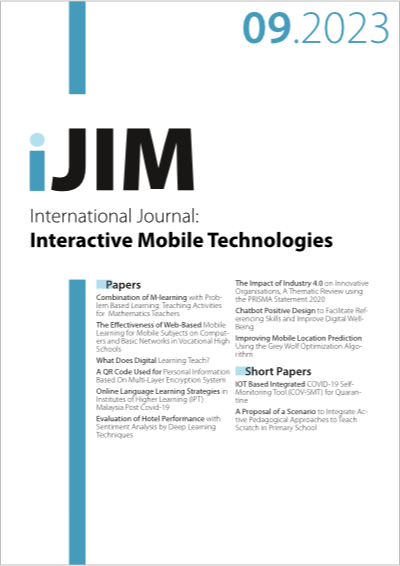IOT Based Integrated COVID-19 Self-Monitoring Tool (COV-SMT) for Quarantine
DOI:
https://doi.org/10.3991/ijim.v17i09.35505Keywords:
COVID-19, IoT, self-monitoring tool, healthAbstract
COVID-19 Self-Monitoring Tool (COV-SMT) is the research developed to address multiple issues in monitoring quarantined individuals due to COVID-19 infection. As COVID-19 is still highly infectious despite the availability of vaccines, the implementation of contactless Internet of Things (IoT) technology should be encouraged to minimize the need for medical staff to perform daily health checks and thus prevent them from being directly infected during checking. This research aims to develop an effective method to monitor quarantined individuals regarding their vital signs, such as body temperature, heart rate, and oxygen level. A contactless self-monitoring tool integrated with a stages algorithm is developed to monitor these quarantined individuals with the help of IoT technology. It can provide a consistent platform for patients or users to transfer information or data through networks, including personalized healthcare domains. COV-SMT is an effective tool to streamlet the overall process of taking measurements from quarantined individuals. It integrates multiple sensors into one tool while providing a better overall picture with its graphical presentation to help patients and medical staff better understand their health conditions.
Downloads
Published
How to Cite
Issue
Section
License
Copyright (c) 2023 Robiah Yusof, Edvin Loh Yong Loke, Gs. Dr. Othman Mohd, Ts. Erman Hamid, Ts. Haniza Nahar, Dr Fahmi Arif, Dr Suzi Iryanti Fadilah

This work is licensed under a Creative Commons Attribution 4.0 International License.


